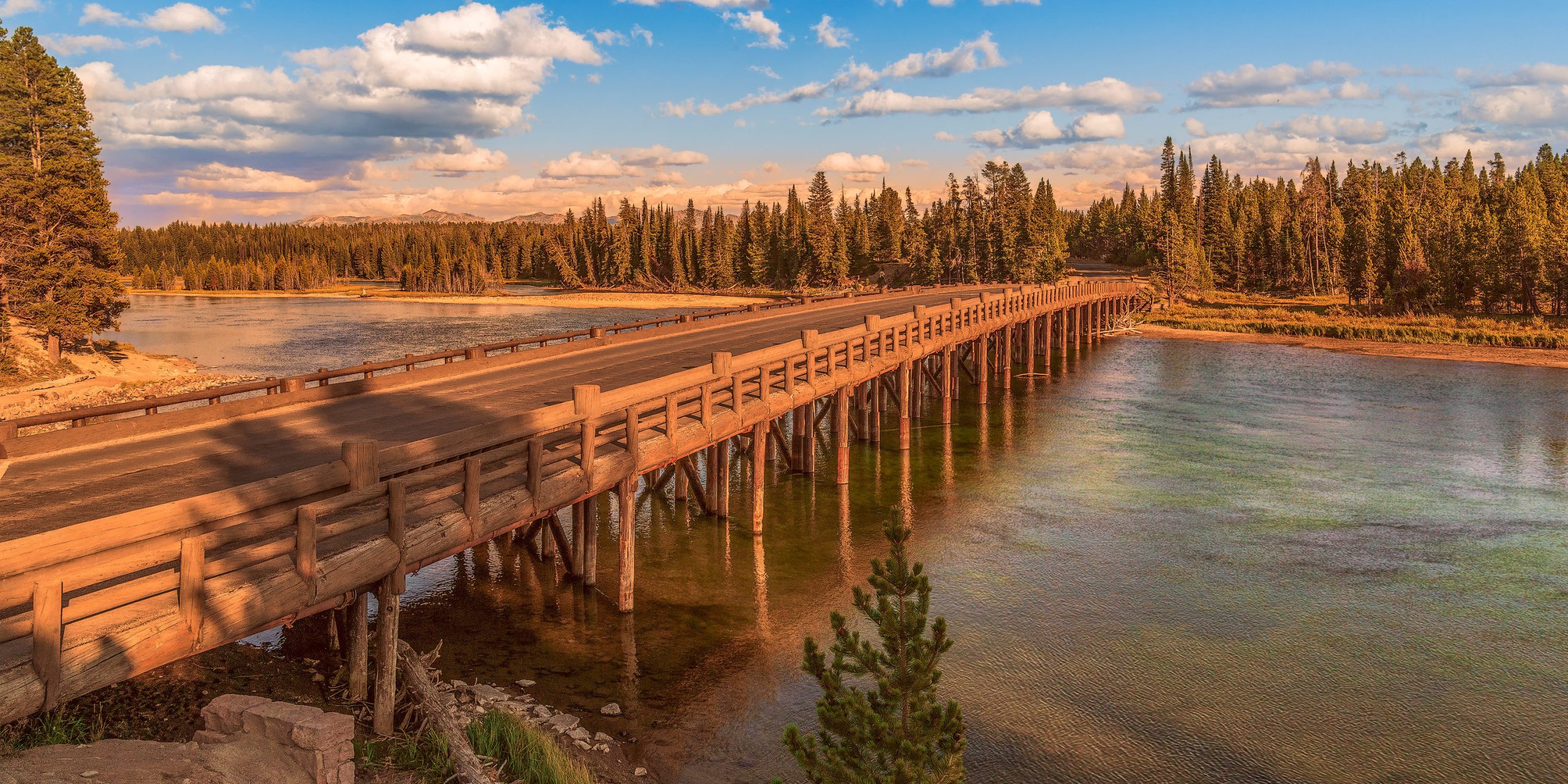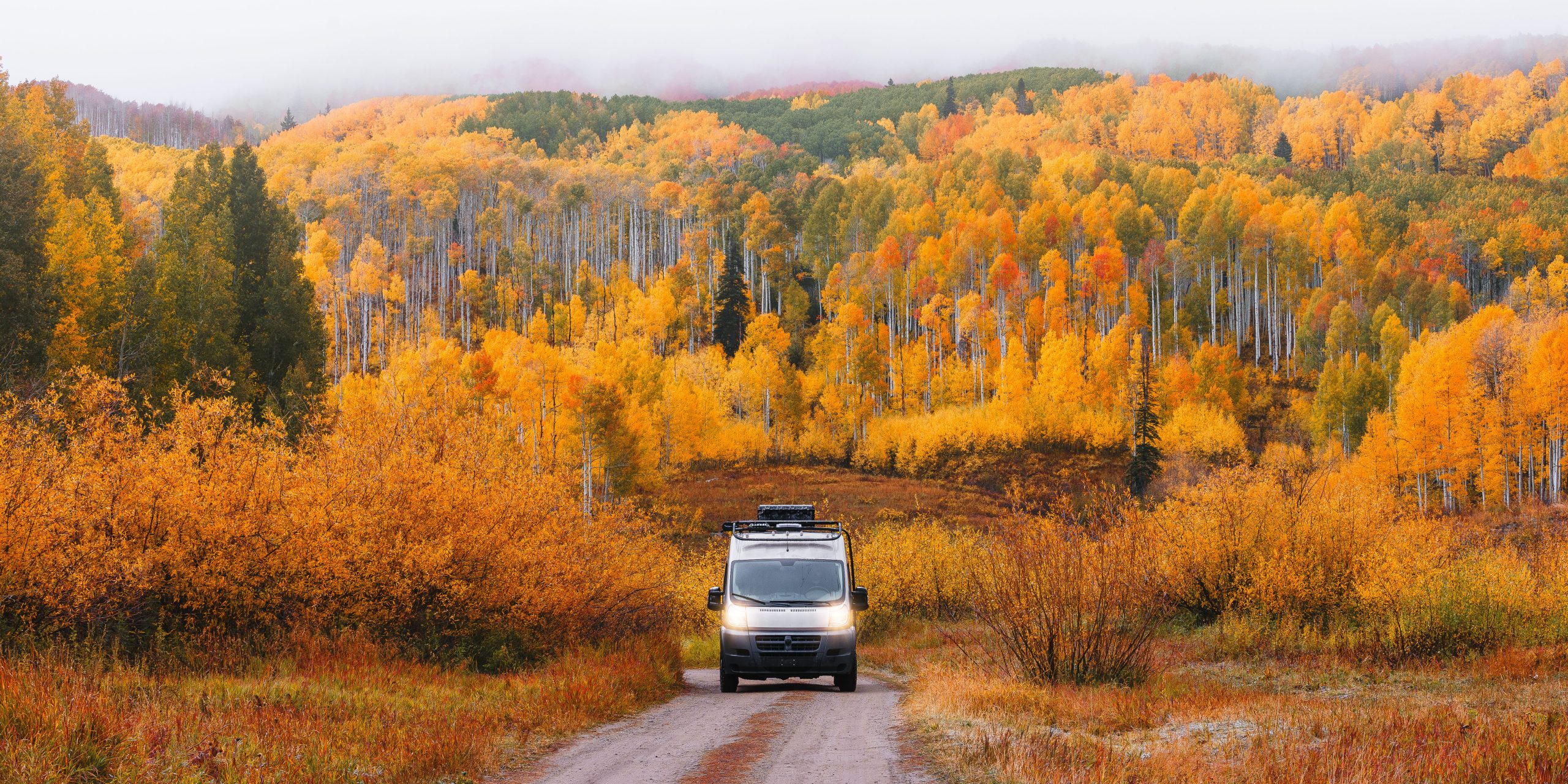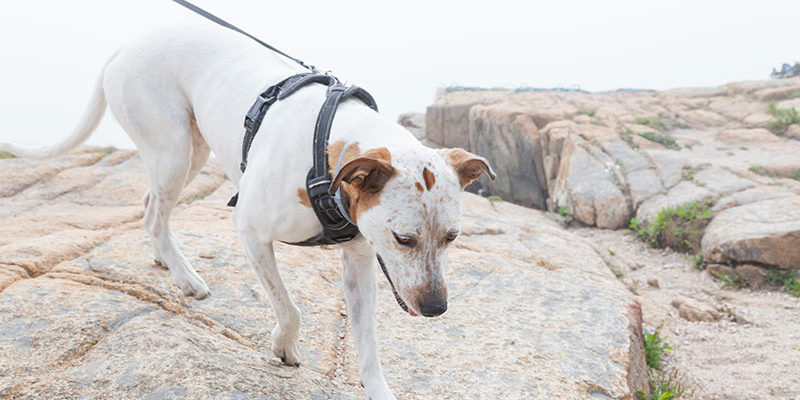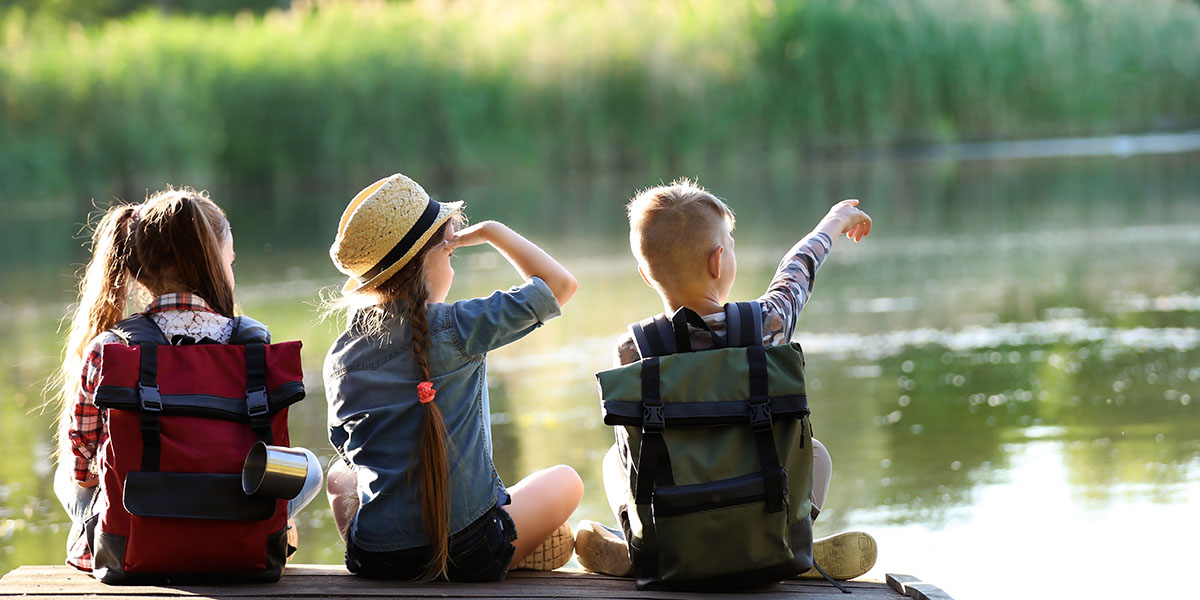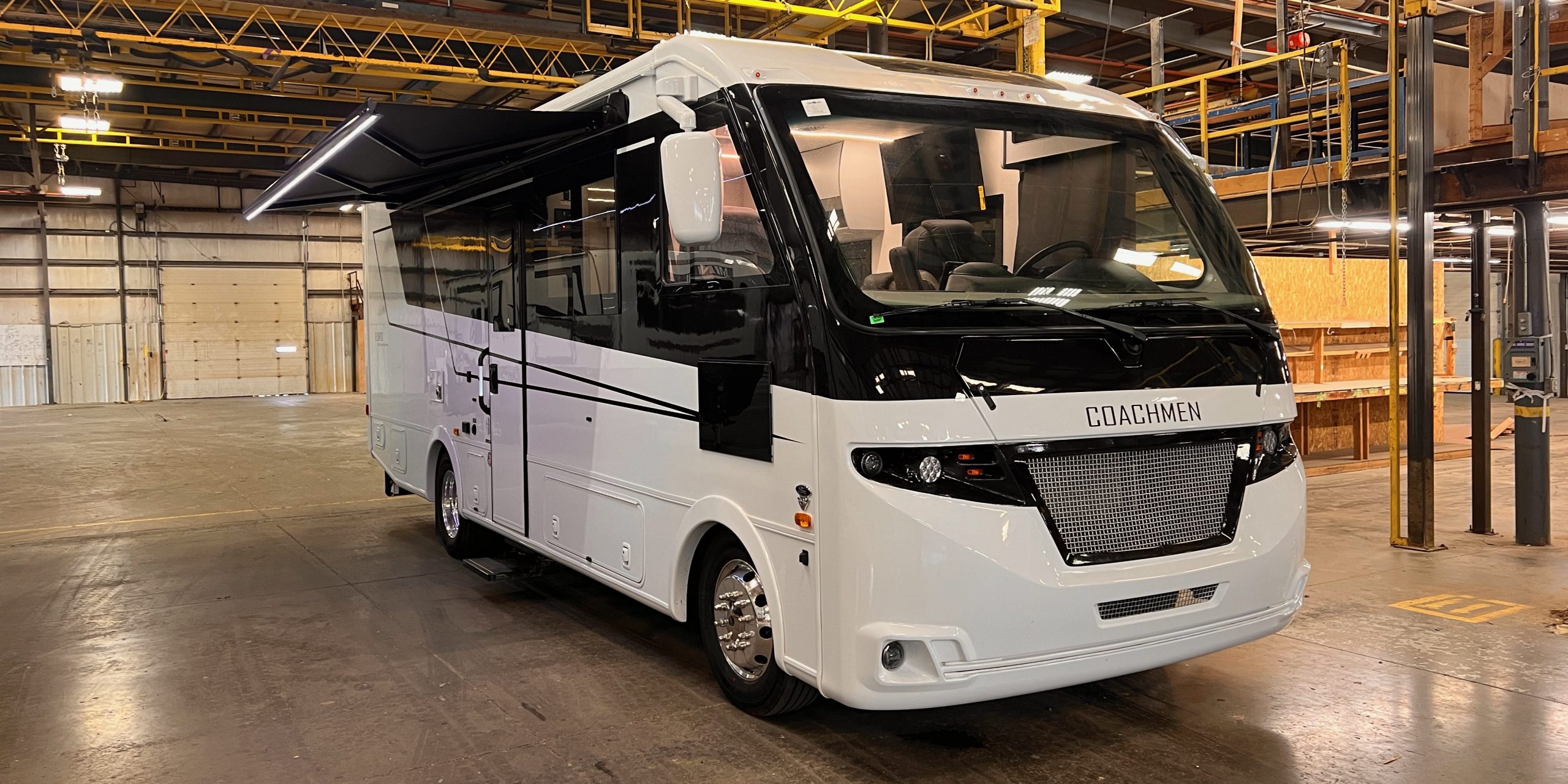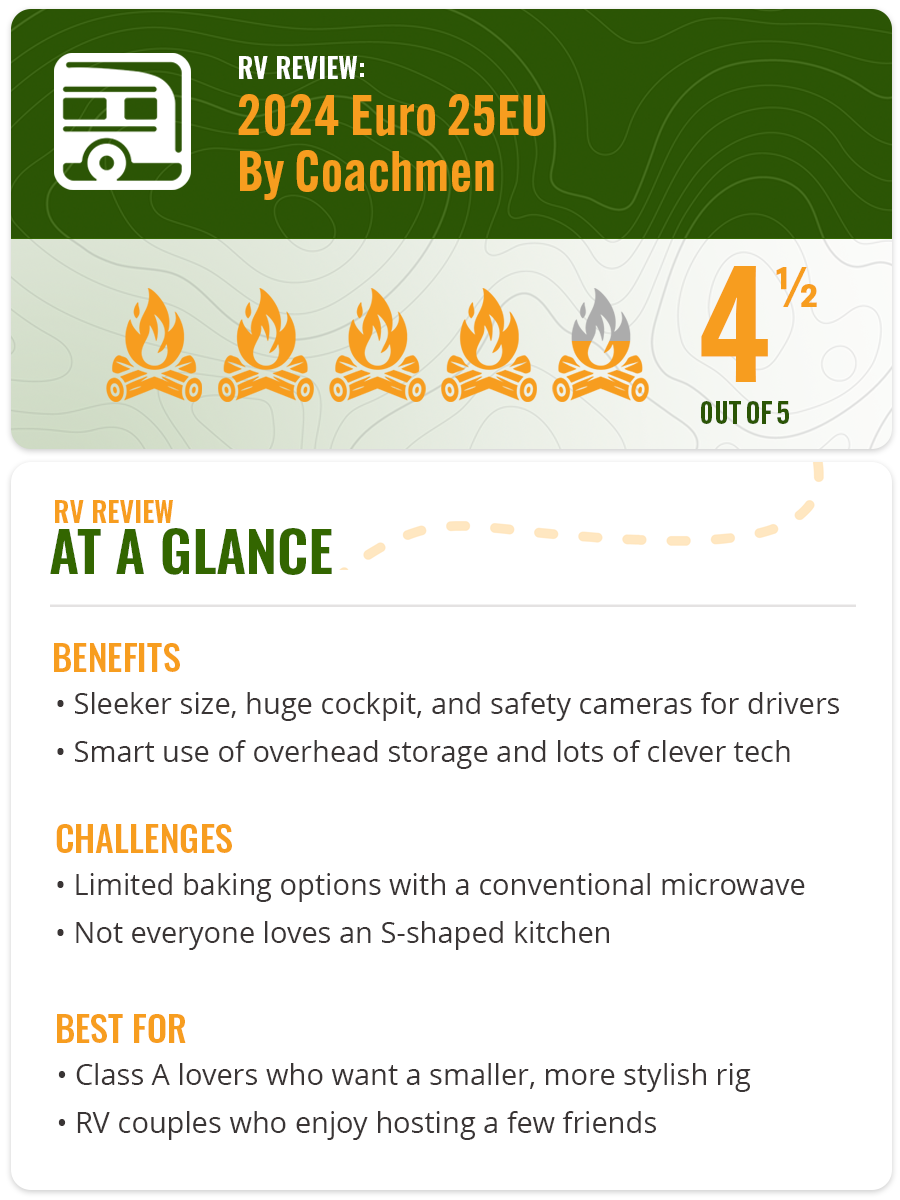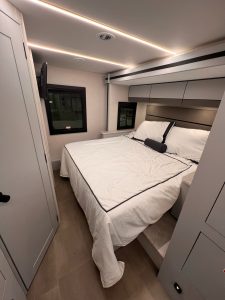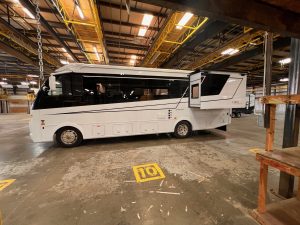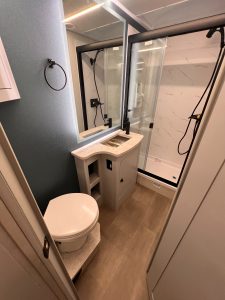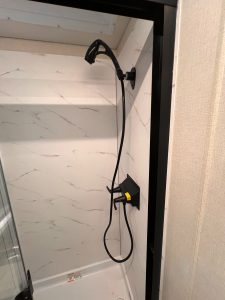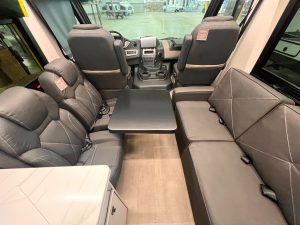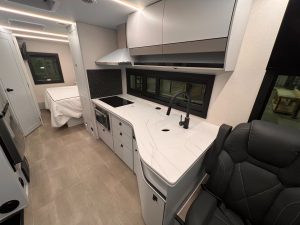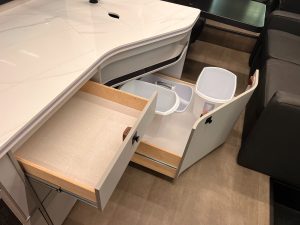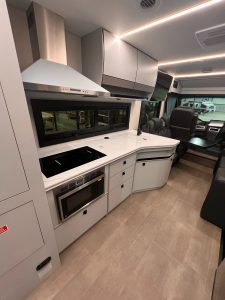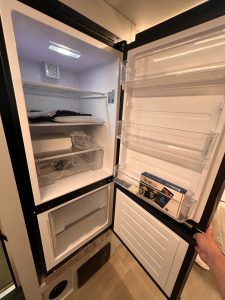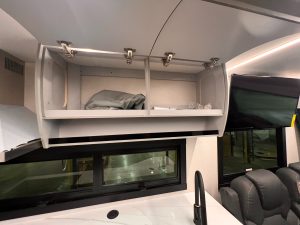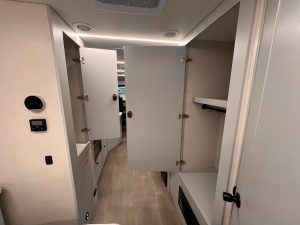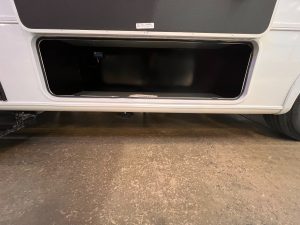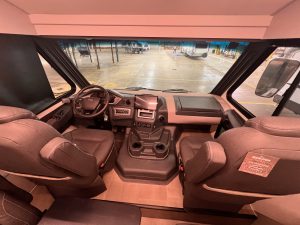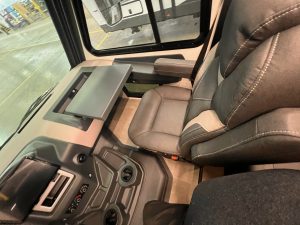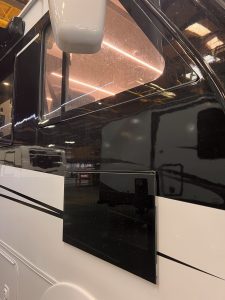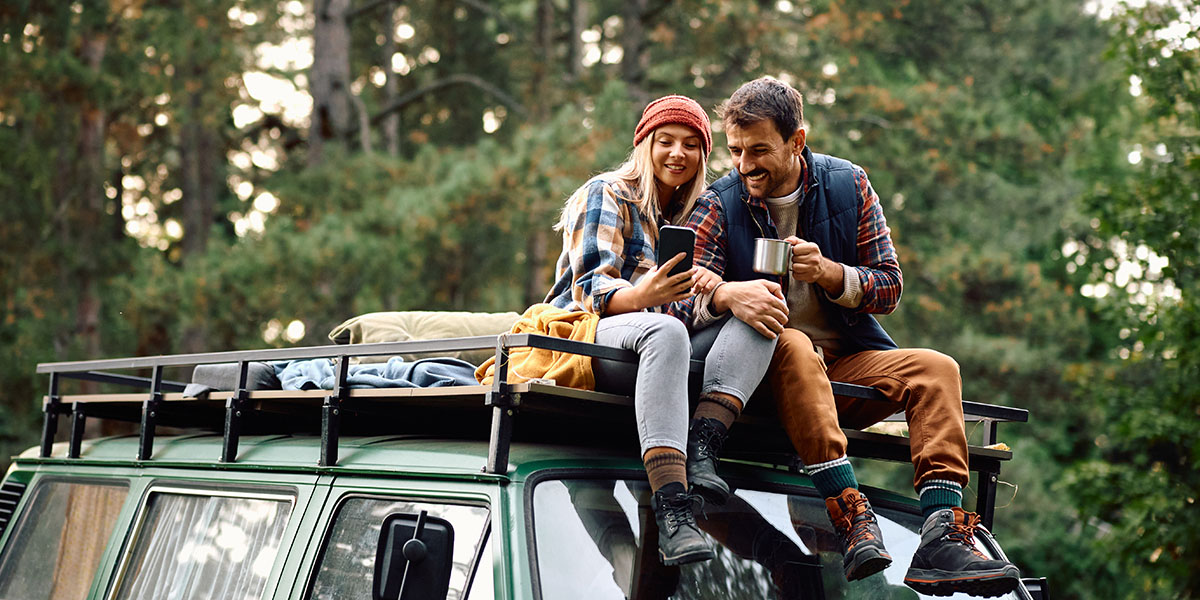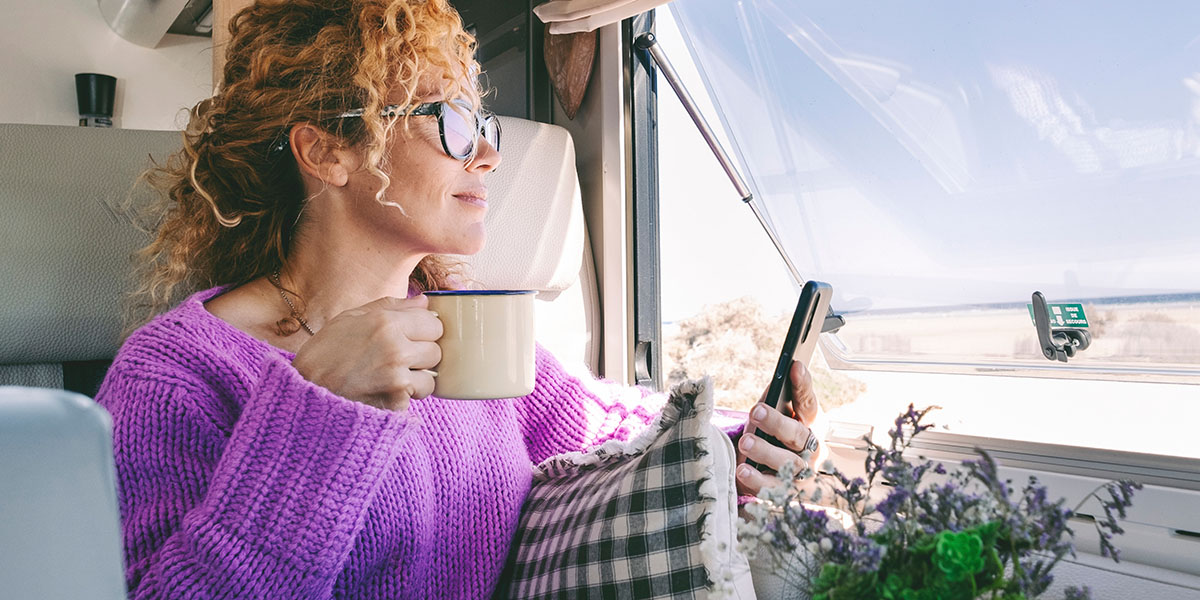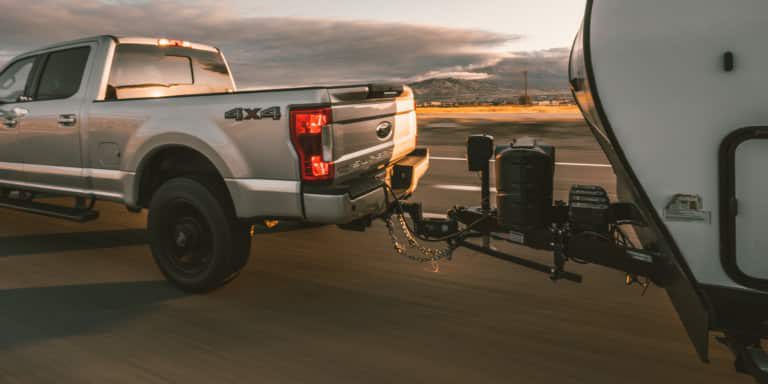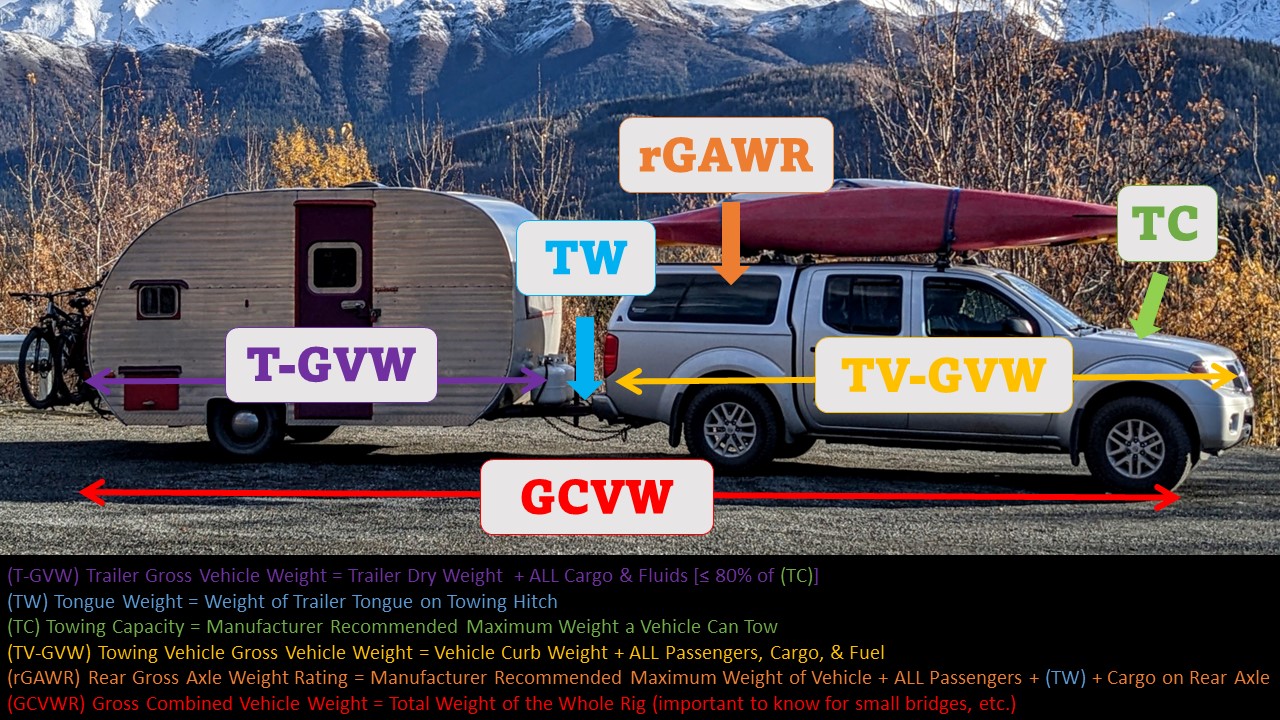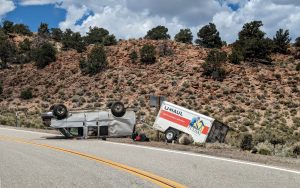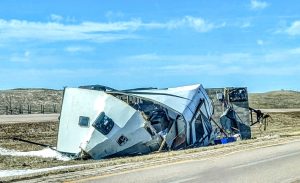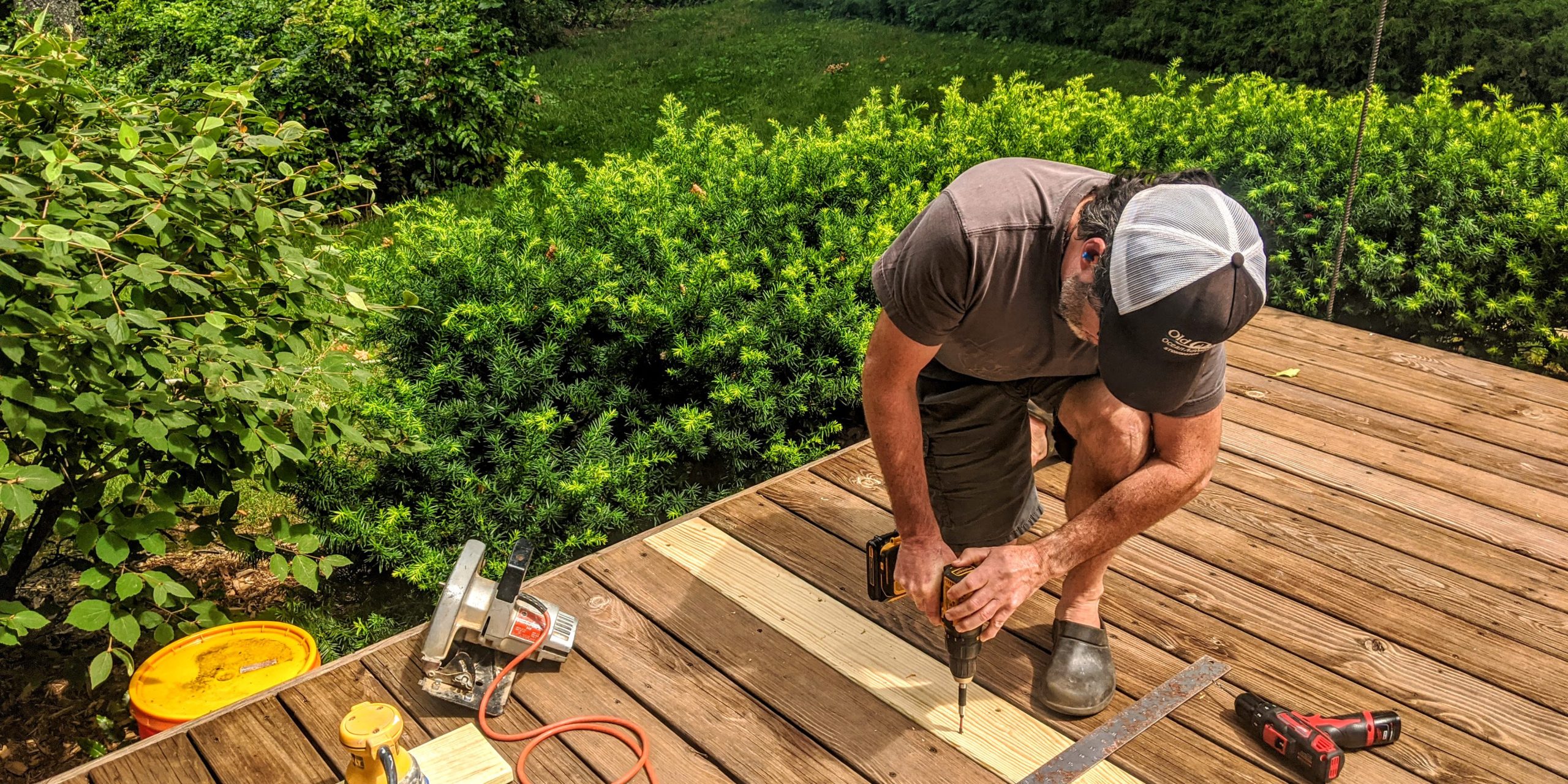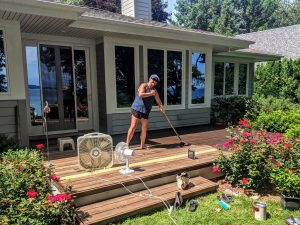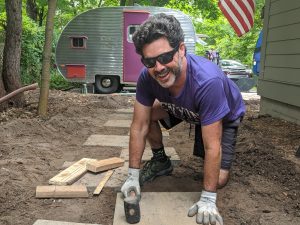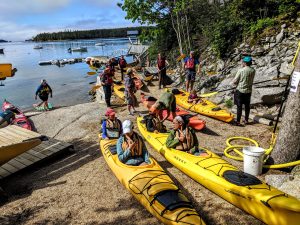Yellowstone racks up an impressive stat sheet. Kaleidoscopic hot springs, geysers, and majestic peaks mirrored in crystal lakes paint the canvas of an enduring American wilderness. Grizzlies, wolves, bison, elk, mountain lions, pronghorn and bighorn sheep barely scrape the surface of the 67 species of mammals roaming free in Yellowstone National Park. Consequently, I don’t know a soul who doesn’t have Yellowstone on their bucket list. The untamed symphony of America’s first national park beckons to the wild in us all. And for the lucky few who plan on putting this gemstone into their bucket, there’s one big question: What is Yellowstone’s top campground?
An experienced off-grid RVer or tent camper can unleash their inner feral side at the 2,000 primitive campsites at 12 basic campgrounds inside the park. But for those of us that want to experience the park by the light of a 50-amp switch, we set our sights on Fishing Bridge RV Park. In the entire breadth and width of Yellowstone National Park, Fishing Bridge RV Park is the only full hookup RV park available.
Why Stay at Fishing Bridges RV Park
Location, location, location. When you get to Yellowstone, you will be faced with 2.2 million acres of eternal wilderness, with every acre beckoning to your exploring spirit. The sheer size of the park is quite possibly its only downfall. Where do you begin? It’s all about location, and while there is no true ‘central’ location of the park, you will get pretty stinkin’ close at Fishing Bridge RV Park.
The RV park is located at the mouth of the Yellowstone River, which feeds into the iconic Yellowstone Lake. From the historic Fishing Bridge (less than a mile from the RV Park) you can see Cutthroat Trout swimming in the deep clear waters of the lake. Hayden Valley, just to the north, offers quite possibly the most lovely drive in all of Yellowstone. The valley is a great place for wildlife spotting. You can reach almost anything in Yellowstone in under two hours from Fishing Bridge RV Park, with the exception of Mammoth Hot Springs.
Yellowstone’s Top Campground: Basics and RV Need-to-Knows
The park recently completed its renovation projection which now boats 172 additional RV sites, a larger parking lot and registration building, better shower facilities, and more laundry facilities. The park now offers a total of 310 RV sites equipped with water, sewer and electric. In the past, there have been complaints that many RV sites are difficult to park in. But now, after the renovations, the new sites are larger with most of them offering pull through access.
Fishing Bridges RV Park
- Open Dates. Fishing Bridge RV Park is open from May 10th, to October 13th
- Volume Control. Generators are allowed at the park, but as per NPS guidelines, they cannot exceed 60 decibels.
- RV Length. Recreational vehicles with a combined length of 95 feet (RV + tow vehicle) can be accommodated at the sites.
- Dump Access. There is a dump station at the RV park, but it is not always accessible due to low temperatures at certain times during the year.
- No Soft-Sided RVs. If you are traveling with a soft sided RV, or a pop up camper, you will need to find another campground to park at, as there are no tents or soft sided RV’s allowed at this park.
- Local Shade. Some of the newly constructed sites are lacking in shade, so keep that in mind when you are choosing your RV site, as there are some sites available with nearby trees for shade
- What’s in Store. The Fishing Bridge Park store has basic amenities, but you will need to stock up on most food items at a store outside the RV park before hand. This handy article lists grocery stores both in and outside of Yellowstone, depending on what you need, and which direction you are coming from.
- Bearproofing. You must ensure your campsite is bear proof at all times. (This one is no joke.)
- Cell Reception. Much of Yellowstone National Park is outside of cell phone reception. There are some carriers at Fishing Bridge RV Park that will receive a connection, but you may want to call ahead to be sure. I’ve heard that Verizon works well from the Bridge, but AT&T doesn’t work at all.
Wildlife
It’s one thing to stare a little black bear in the face, as it rummages through your trash can, (a daily occurrence where I live in the Blue Ridge Mountains). They are kinda cute, with their little round ears and twitchy brown nose. But, have you ever looked a grizzly bear in the face? Cute doesn’t really fit the description.
I have heard stories of grizzlies going after Budweiser cans left out on picnic tables, and swallowing them whole. One guy even said he saw a grizzly bear open up the hardtop on a VW bug like a can of sardines. Bears routinely break into cars with fast food bags inside. Their noses are one of nature’s marvels, and they can smell the Big Mac inside the car. All of these stories came from campers at Fishing Bridges RV Park. And that is why there are no tents or soft sided campers allowed at Yellowstone’s top campground.
You may also encounter wolves, and bison during your stay. Be aware that the bison can be hard to spot at night, and they often lounge around the roads. Whatever wildlife you encounter, always keep a wide berth.
And for a smaller wildlife encounter, be prepared for mosquitos, depending on what time of year you go.
Accessibility
Technically, Yellowstone National Park is open year round, but access is limited in the fall, winter and spring. This park resource offers a detailed breakdown of different areas within the park and their opening/closing dates. And if you’ve ever driven out west, then you probably know the long waits in the middle of a long desolate highway, or a steep and narrow mountain pass, that road construction can cause. Don’t forget to check the National Park Service’s road construction map before your trip, to ensure you don’t get stuck in one of those long meandering lines of unhappy tourists going nowhere fast, in the middle of nowhere.
If you imagine a smooth drive into Yellowstone’s top campground, think again. The roads approaching Fishing Bridges RV Park can be laden with pot holes. (Remember you’re here for the rough stuff.) Make sure you secure everything inside your RV before you embark.
Elevation
If you’ve ever traveled at high elevations in the past, you may know that it can have uncomfortable, and sometimes dangerous affects on the body. Fishing Bridge sits at 8,000 feet in elevation, with the highest point in Yellowstone being upwards of 11,000 feet. Staying hydrated might seem obvious to some, but I grew up in the flat and tedious terrain of the Midwest in Iowa, where elevation meant the top of a rolling meadow overlooking a corn field somewhere.
My first taste of real elevation was in the rugged mountains of Colorado. After a scenic drive up the mountains near Mesa Verde, I ended up in a park bathroom with a nose bleed so severe (get ready) that my eyes started bleeding. My sister and I had watched “Stigmata” the night before, prior to embarking on our epic road trip out west. I couldn’t make this up if I tried. The rest of the day was spent in the emergency room at the nearest hospital, only to learn that it all could have been avoided with more water intake. I don’t travel anywhere these days without hydration packets to toss in my water bottle
Booking a Site at Fishing Bridge RV Park
Most national parks offer bookings through recreation.gov. But sites at Fishing Bridge RV Park are booked through yellowstonenationalparklodges.com. Each RV site at Yellowstone’s top campground is just under $100 a night, inclusive of two showers at the bath houses per night. Even with the 172 newly built RV sites at the park, it can be tricky to secure a place without booking weeks or even months in advance.
A great way to book a site at a popular campground is with the campsite notifier app. If you are frequenting national park campgrounds, especially the more popular ones like Yosemite and Yellowstone, this app will notify you when there is a cancellation, giving you the option to pay and book your dates right away.
On and Off the Beaten Path Adventures
The cutthroat trout at Yellowstone are the soul attraction for many visitors of the park. Bring your waders and fly fishing gear, and get ready to slay these yellow monsters on the Yellowstone River. The season opens on July 15th. Bridge fishing is not allowed in the park. Even so, there are plenty of places along the Yellowstone River and Yellowstone Lake to catch your limit.
If you’d like to stay close, here are some key attractions near Fishing Bridge RV Park. For some more frequented adventure spots near Yellowstone’s top campground, here are land and water excursions, as well as equipment rentals available. And for a more off the beaten path excursion there are plenty of secret gems in Yellowstone offering a more intimate and equally memorable time.
